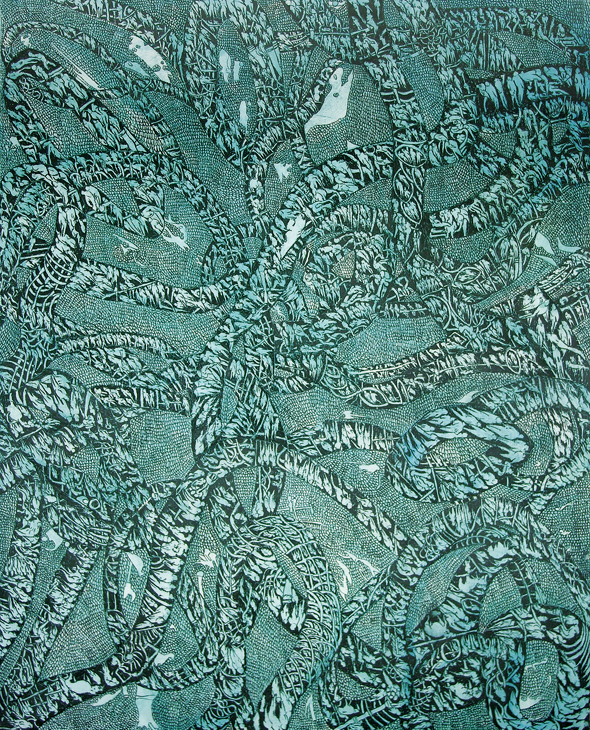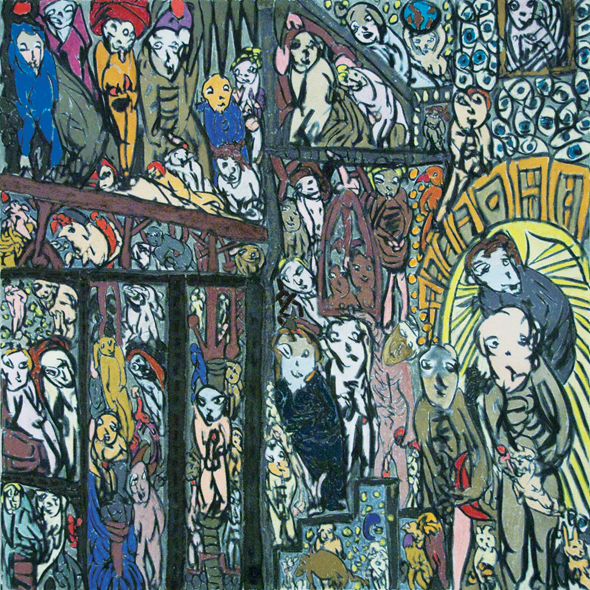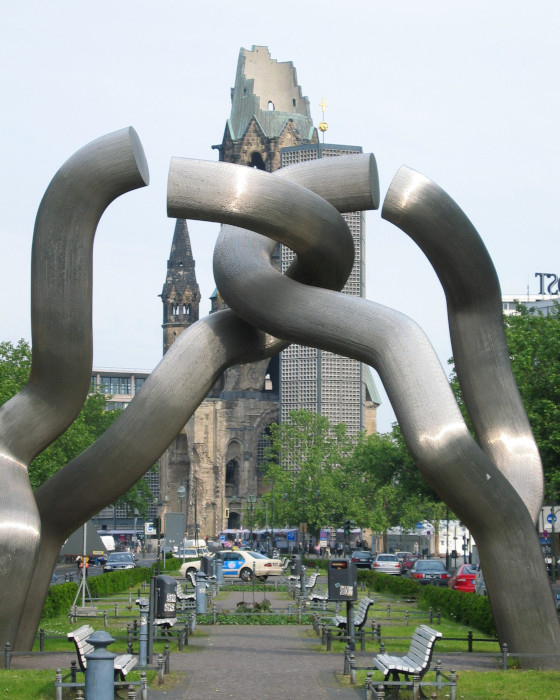In a book on African history the author (Jarle Siemensen) makes the following point: Sahara separates the surrounding countries, but also connects them. When I read this, I was confused. How can the same thing separate and connect?
Well, in the case of Sahara, I believe the author took it for well-known that the desert is hard to cross and went on explaining that even if difficult – humans have long been able to do so. “Always” there have been caravans. Those who lived at the edge of the desert were able to cross and meet other people; they traded goods and perhaps exchanged ideas.
Still the “contradiction” kept puzzling me. I think I have now understood which underlying question made me feel uncomfortable.
Known and unknown


In the first image there is connection, isn’t it, but what is connected may be somewhat obscure. Snakes, branches or tubes? The next image shows human figures – by the same artist, made at the same time. Do the human figures connect? No, I would say, people are mostly facing “us”, the spectator. Some of them have been put in a “compartment” together with others, but they look more like going by train with strangers than being with family, friends or colleagues. They do not face each other.
If people are connected in de Silva’s painting, they may be unaware of it. But can you be connected without knowing? Yes, and you need not enter into mysterious thinking to accept that. In the 20th century Sigmund Freund and other psychologists created the concept “subconscious”. This is the realm of unknown forces and include links to other people through common values and beliefs. Even collective strategic behaviour (even a war?) can be driven by forces which the participants are not fully aware of.
Dominant ideology
Contact is good, whereas separation is sad, right? You can add quite a few similar pairs of concepts, and you will find that the current culture is much in favour of contact and synonyms like near (not distant) and open (not closed).
The above-mentioned historian’s statement disrupts this ideological one-sidedness. In the concrete case of Sahara, the “paradox” can easily be solved, but on a general level the statement suggests that to connect and to separate are basically intertwined – even depending on another.
In order to connect there must be two or more distinct entities to connect. In fact, the more distinct (the more different?) the higher the potential value of contact. In the case of Sahara, the desert once made out a natural border. If there are no borders, you risk seeing one monoculture dominating the whole planet.
A “greenhouse” for your thoughts
Beware of the need for separation if you have an original idea. But do you want to share it immediately? That is a good idea if you want to be 100 % mainstream – filter all your thoughts against mainstream acceptance. By the way, this does not apply only to original thoughts. Also, quite common-sense observations and ideas may need some protection before you expose them to the world – depending on the circumstances. History tells us that mainstream is not immune to madness.
Artwork of the fortnight
Some borders are natural, some borders artificial – and some borders are so unnatural, that they are simply evil.
In fact, the word “evil” is said to mean “split”. A straightforward “bad” person is not so difficult to relate to. Difficult is the combination of say, nice appearance und bad underlying forces.
The latter, of course, may apply to all of us – get to know yourself (carefully), and don’t forget others (careful!).
No wonder, then, that the two (or four) “figures” in the sculpture below seem hesitant. Embrace or get loose? Are they driven by their own will or by external forces? Will I be free or will I be bound?

- See also Love, The Battle of the Sexes, Solitude
- About this blog
Schreibe einen Kommentar